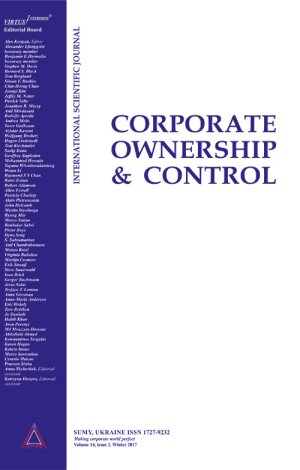
-
 Journal menu
Journal menu

- General information
- Editorial Board and External Reviewers
- Journal Policies
- Publication Ethics and Malpractice Statement
- Instructions for authors
- Paper reviewing
- Article processing charge
- Feedback from stakeholders
- Journal’s Open Access statement
- Order hard copies of the journal
- 50 most cited papers in the journal
CORPORATE GOVERNANCE IN BANKS: THE NIGERIAN EXPERIENCE
Download This ArticleAdeyemi Babalola
Abstract
Recent failures/collapse of high profit institutions around the world such as Enron, Parmalat, Worldcom, Barings Bank to mention just a few have shown that no company can be too big to fail. A common trend that ran through these monumental failures was poor corporate governance culture, exemplified in poor management, fraud and insider abuse by both management and board members, poor asset and liability management, poor regulations and supervision among others. This paper examines the conceptual framework of corporate governance. Some of the components of corporate governance in general and in the Nigerian banking sector in particular were identified and observed. Secondary sources were basically consulted for the purpose of this work and simple percentages were also used to explain a few of the findings. The study revealed that the boards of directors of a good number of these banks were ineffective and that the internal controls were equally weak as a result of the overriding influence of the chairman/chief executive officers. It was also observed that there were instances of insider abuses such as granting of insider related credits, huge non-performing loans and so on. In addition, lack of transparency and non-disclosure of financial transactions were very rampant in the banking sector in Nigeria according to the study carried out. Recommendations made include total separation of ownership from management, sound internal control system, full disclosure of all financial transactions and strengthening the enforcement mechanism of the regulatory authorities.
Keywords: Governance, Insider Abuses, Transparency, Board of Directors, Ownership, Internal Control, Banking Sector, Management, Board Composition, Board Responsibilities, Non-Disclosure
How to cite this paper: Adeyemi, B. (2010). Corporate governance in banks: the Nigerian experience [Special issue]. Corporate Ownership & Control, 7(4-5), 34-41. https://doi.org/10.22495/cocv7i4sip5

















